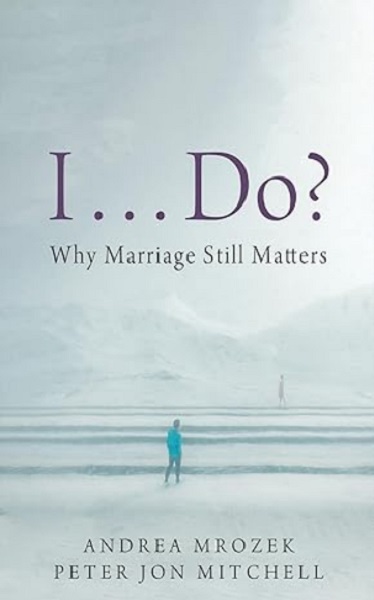Brownstone Institute
How an Occupied Twitter Ruined Countless Lives

From the Brownstone Institute
BY
From the beginning of the Covid panic, it felt that something was very wrong. Never had a pandemic, much less a seasonal pathogenic wave, been treated as a quasi-military emergency requiring the upending of all freedoms and rights.
What made it more bizarre was how alone those of us who objected felt until very recently when Elon Musk finally bought the platform Twitter, fired all the embedded federal agents, and has started to release the files.
As Elon said, every conspiracy theory about Twitter was true and then some. And what applies at Twitter pertains equally to Google, Facebook, LinkedIn, and all platforms associated with those companies (YouTube, Instagram, Messenger, WhatsApp).
The proof is all there. These platforms colluded with the federal government’s administrative arm to craft a particular Covid narrative, throttling and censoring dissidents and boosting any credentialled expert who was willing to toe the line.
At this point, it is wise to trust no one and nothing but those who fought against this nonsense. As the crisis began, I was blessed with an unusually large reach on most platforms. But I sat by and watched it dwindle to nothingness as the months went on. Yes, I had posts pulled but I was never banned. It’s just that my channels of communication shrunk dramatically by the months and weeks.
This was tragic for me simply because I watched the population gradually fall into a medieval-style disease panic that tore families apart, kept loved ones from traveling, wrecked businesses and churches, and even violated the sanctity of the homes. This “invisible enemy” about which everyone in government was going on about shredded the whole social fabric.
I had been writing about pandemics and interventions for 16 years, warning repeatedly that this was possible. Knowing about this history, and having a platform to speak, I felt a very strong moral obligation to share my knowledge if only to make some contribution to calm people down and perhaps relax some of the impositions on liberty. But at that very moment, my voice was nearly silenced. And I was hardly alone. Hundreds and thousands of others were in the same position but we had a very difficult time even finding each other.
There was one exception early on. I wrote a piece on Woodstock and the 1968-69 flu season. A fact-checker rated it as true and the Facebook algorithms really screwed up. Facebook pushed it out for about two weeks before someone figured out what was happening and then throttled it back heavily. Or perhaps there was one employee there who made it so. I really do not know. In the meantime, this one article garnered millions of views and shares.
It was my first experience with the astounding power of these venues to shape the public mind. People innocently use all these tools without the slightest understanding that there is a reason why they are seeing what they are seeing. Every word or picture you see on your apps is there for a reason, a choice of this or that, and the driving force here is what powerful people what you to see and not see.
We know now that the stream of information is carefully curated by algorithms and human intervention, not to fit with your interests as they once claimed, but to fit with regime interests.
In other words, what people used to say about the CCP role in the management of TikTok applies fully in the US today with all the main tech companies. And please keep in mind, we only know this because of the dump of Twitter files. All of this is still happening at Google, Meta, and LinkedIn. The latter removes posts by Brownstone often. And the rest throttle our reach.
This has been going on for years, but Covid intensified it all. Even from the beginning, something was very off. For example, on March 19 – the day after the Fauci/Birx/Trump press conference and the day before CISA seized control of all labor markets – an obscure digital education entrepreneur named Thomas Pueyo came out with an implausibly documented and comprehensively argued piece called The Hammer and the Dance.
It was an elaborate argument for locking down to flatten the curve, complete with fancy graphs and pseudo-scientific blather of every sort. The author was essentially unknown but within 24 hours, the piece was garnering many millions of shares and being spread everywhere by all the big tech platforms, as if it were some kind of canonical treatise. I doubt seriously that he wrote it – no way in one day; it had to be planned for weeks – but rather that he volunteered his name to be attached to it. It became the most important framing of the lockdown that appeared that month.
Watching that one preposterous article take over so aggressively, even as dissidents’ writings slipped into nothingness, including my own, was quite a bit of digital magic to behold. But we know now it was not magic. It was a policy. It was an intention. It was a propaganda ploy. Again, we must understand that this is still going on right now, with the only real exception among the larger players being Twitter.
There is one solace. We know now that we were not all going crazy. It was all deliberate. Matt Taibbi puts it well:
Sometime in the last decade, many people — I was one — began to feel robbed of their sense of normalcy by something we couldn’t define. Increasingly glued to our phones, we saw that the version of the world that was spat out at us from them seemed distorted. The public’s reactions to various news events seemed off-kilter, being either way too intense, not intense enough, or simply unbelievable. You’d read that seemingly everyone in the world was in agreement that a certain thing was true, except it seemed ridiculous to you, which put you in an awkward place with friends, family, others. Should you say something? Are you the crazy one?
I can’t have been the only person to have struggled psychologically during this time. This is why these Twitter files have been such a balm. This is the reality they stole from us! It’s repulsive, horrifying, and dystopian, a gruesome history of a world run by anti-people, but I’ll take it any day over the vile and insulting facsimile of truth they’ve been selling. Personally, once I saw that these lurid files could be used as a road map back to something like reality — I wasn’t sure until this week — I relaxed for the first time in probably seven or eight years.
So far, thanks to the great work of David Zweig, who has somehow managed to elude the censors all along (he was in attendance at the original Great Barrington Declaration event, god bless him), we have a better accounting of what happened. Names we all recognize as friends are listed, including Martin Kulldorff and Andrew Bostom, but there are thousands more. There is no question in my mind that my own accounts were targeted.
This is about much more than free speech and the operation of media channels without government intervention. The Covid controls utterly smashed American liberty and social functioning, resulting in mass suffering, educational losses, shattered communities, and a precipitous collapse in public health that has shaved off years in life expectancy and caused an explosion of excess deaths.
It might have been stopped or at least lessened in duration with some open discussion. This is not just of interest to tech and legal geeks. The closing down of opinion and debate resulted in unspeakable human carnage. And even as I write, the largest sources of the mainstream media are still refusing to report on this.
Ask yourself: why might this be? I think we all know the answer.
As a final note, I can assure you that this is only the beginning. The full story ropes in the whole of the administrative state, FTX, huge nonprofit organizations, and many back channels of power, money, and truly evil collaboration. We may never get the full story, and justice as always will be elusive, but we cannot let this moment in history slip by without as much accountability as we can provide.
Brownstone Institute
Net Zero: The Mystery of the Falling Fertility

From the Brownstone Institute
By
If you want to argue that a mysterious factor X is responsible for the drop in fertility, you will have to explain (1) why the factor affected only the vaccinated, and (2) why it started affecting them at about the time of vaccination.
In January 2022, the number of children born in the Czech Republic suddenly decreased by about 10%. By the end of 2022, it had become clear that this was a signal: All the monthly numbers of newborns were mysteriously low.
In April 2023, I wrote a piece for a Czech investigative platform InFakta and suggested that this unexpected phenomenon might be connected to the aggressive vaccination campaign that had started approximately 9 months before the drop in natality. Denik N – a Czech equivalent of the New York Times – immediately came forward with a “devastating takedown” of my article, labeled me a liar and claimed that the pattern can be explained by demographics: There were fewer women in the population and they were getting older.
To compare fertility across countries (and time), the so-called Total Fertility Rate (TFR) is used. Roughly speaking, it is the average number of children that are born to a woman over her lifetime. TFR is independent of the number of women and of their age structure. Figure 1 below shows the evolution of TFR in several European countries between 2001 and 2023. I selected countries that experienced a similar drop in TFR in 2022 as the Czech Republic.

So, by the end of 2023, the following two points were clear:
- The drop in natality in the Czech Republic in 2022 could not be explained by demographic factors. Total fertility rate – which is independent of the number of women and their age structure – dropped sharply in 2022 and has been decreasing ever since. The data for 2024 show that the Czech TFR has decreased further to 1.37.
- Many other European countries experienced the same dramatic and unexpected decrease in fertility that started at the beginning of 2022. I have selected some of them for Figure 1 but there are more: The Netherlands, Norway, Slovakia, Slovenia, and Sweden. On the other hand, there are some countries that do not show a sudden drop in TFR, but rather a steady decline over a longer period (e.g. Belgium, France, UK, Greece, or Italy). Notable exceptions are Bulgaria, Spain, and Portugal where fertility has increased (albeit from very low numbers). The Human Fertility Project database has all the numbers.
This data pattern is so amazing and unexpected that even the mainstream media in Europe cannot avoid the problem completely. From time to time, talking heads with many academic titles appear and push one of the politically correct narratives: It’s Putin! (Spoiler alert: The war started in February 2022; however, children not born in 2022 were not conceived in 2021). It’s the inflation caused by Putin! (Sorry, that was even later). It’s the demographics! (Nope, see above, TFR is independent of the demographics).
Thus, the “v” word keeps creeping back into people’s minds and the Web’s Wild West is ripe with speculation. We decided not to speculate but to wrestle some more data from the Czech government. For many months, we were trying to acquire the number of newborns in each month, broken down by age and vaccination status of the mother. The post-socialist health-care system of our country is a double-edged sword: On one hand, the state collects much more data about citizens than an American would believe. On the other hand, we have an equivalent of the FOIA, and we are not afraid to use it. After many months of fruitless correspondence with the authorities, we turned to Jitka Chalankova – a Czech Ron Johnson in skirts – who finally managed to obtain an invaluable data sheet.
To my knowledge, the datasheet (now publicly available with an English translation here) is the only officially released dataset containing a breakdown of newborns by the Covid-19 vaccination status of the mother. We requested much more detailed data, but this is all we got. The data contains the number of births per month between January 2021 and December 2023 given by women (aged 18-39) who were vaccinated, i.e., had received at least one Covid vaccine dose by the date of delivery, and by women who were unvaccinated, i.e., had not received any dose of any Covid vaccine by the date of delivery.
Furthermore, the numbers of births per month by women vaccinated by one or more doses during pregnancy were provided. This enabled us to estimate the number of women who were vaccinated before conception. Then, we used open data on the Czech population structure by age, and open data on Covid vaccination by day, sex, and age.
Combining these three datasets, we were able to estimate the rates of successful conceptions (i.e., conceptions that led to births nine months later) by preconception vaccination status of the mother. Those interested in the technical details of the procedure may read Methods in the newly released paper. It is worth mentioning that the paper had been rejected without review in six high-ranking scientific journals. In Figure 2, we reprint the main finding of our analysis.

Figure 2 reveals several interesting patterns that I list here in order of importance:
- Vaccinated women conceived about a third fewer children than would be expected from their share of the population. Unvaccinated women conceived at about the same rate as all women before the pandemic. Thus, a strong association between Covid vaccination status and successful conceptions has been established.
- In the second half of 2021, there was a peak in the rate of conceptions of the unvaccinated (and a corresponding trough in the vaccinated). This points to rather intelligent behavior of Czech women, who – contrary to the official advice – probably avoided vaccination if they wanted to get pregnant. This concentrated the pregnancies in the unvaccinated group and produced the peak.
- In the first half of 2021, there was significant uncertainty in the estimates of the conception rates. The lower estimate of the conception rate in the vaccinated was produced by assuming that all women vaccinated (by at least one dose) during pregnancy were unvaccinated before conception. This was almost certainly true in the first half of 2021 because the vaccines were not available prior to 2021. The upper estimate was produced by assuming that all women vaccinated (by at least one dose) during pregnancy also received at least one dose before conception. This was probably closer to the truth in the second part of 2021. Thus, we think that the true conception rates for the vaccinated start close to the lower bound in early 2021 and end close to the upper bound in early 2022. Once again, we would like to be much more precise, but we have to work with what we have got.
Now that the association between Covid-19 vaccination and lower rates of conception has been established, the one important question looms: Is this association causal? In other words, did the Covid-19 vaccines really prevent women from getting pregnant?
The guardians of the official narrative brush off our findings and say that the difference is easily explained by confounding: The vaccinated tend to be older, more educated, city-dwelling, more climate change aware…you name it. That all may well be true, but in early 2022, the TFR of the whole population dropped sharply and has been decreasing ever since.
So, something must have happened in the spring of 2021. Had the population of women just spontaneously separated into two groups – rednecks who wanted kids and didn’t want the jab, and city slickers who didn’t want kids and wanted the jab – the fertility rate of the unvaccinated would indeed be much higher than that of the vaccinated. In that respect, such a selection bias could explain the observed pattern. However, had this been true, the total TFR of the whole population would have remained constant.
But this is not what happened. For some reason, the TFR of the whole population jumped down in January 2022 and has been decreasing ever since. And we have just shown that, for some reason, this decrease in fertility affected only the vaccinated. So, if you want to argue that a mysterious factor X is responsible for the drop in fertility, you will have to explain (1) why the factor affected only the vaccinated, and (2) why it started affecting them at about the time of vaccination. That is a tall order. Mr. Occam and I both think that X = the vaccine is the simplest explanation.
What really puzzles me is the continuation of the trend. If the vaccines really prevented conception, shouldn’t the effect have been transient? It’s been more than three years since the mass vaccination event, but fertility rates still keep falling. If this trend continues for another five years, we may as well stop arguing about pensions, defense spending, healthcare reform, and education – because we are done.
We are in the middle of what may be the biggest fertility crisis in the history of mankind. The reason for the collapse in fertility is not known. The governments of many European countries have the data that would unlock the mystery. Yet, it seems that no one wants to know.
Author
Brownstone Institute
FDA Exposed: Hundreds of Drugs Approved without Proof They Work

From the Brownstone Institute
By
The US Food and Drug Administration (FDA) has approved hundreds of drugs without proof that they work—and in some cases, despite evidence that they cause harm.
That’s the finding of a blistering two-year investigation by medical journalists Jeanne Lenzer and Shannon Brownlee, published by The Lever.
Reviewing more than 400 drug approvals between 2013 and 2022, the authors found the agency repeatedly ignored its own scientific standards.
One expert put it bluntly—the FDA’s threshold for evidence “can’t go any lower because it’s already in the dirt.”
A System Built on Weak Evidence
The findings were damning—73% of drugs approved by the FDA during the study period failed to meet all four basic criteria for demonstrating “substantial evidence” of effectiveness.
Those four criteria—presence of a control group, replication in two well-conducted trials, blinding of participants and investigators, and the use of clinical endpoints like symptom relief or extended survival—are supposed to be the bedrock of drug evaluation.
Yet only 28% of drugs met all four criteria—40 drugs met none.
These aren’t obscure technicalities—they are the most basic safeguards to protect patients from ineffective or dangerous treatments.
But under political and industry pressure, the FDA has increasingly abandoned them in favour of speed and so-called “regulatory flexibility.”
Since the early 1990s, the agency has relied heavily on expedited pathways that fast-track drugs to market.
In theory, this balances urgency with scientific rigour. In practice, it has flipped the process. Companies can now get drugs approved before proving that they work, with the promise of follow-up trials later.
But, as Lenzer and Brownlee revealed, “Nearly half of the required follow-up studies are never completed—and those that are often fail to show the drugs work, even while they remain on the market.”
“This represents a seismic shift in FDA regulation that has been quietly accomplished with virtually no awareness by doctors or the public,” they added.
More than half the approvals examined relied on preliminary data—not solid evidence that patients lived longer, felt better, or functioned more effectively.
And even when follow-up studies are conducted, many rely on the same flawed surrogate measures rather than hard clinical outcomes.
The result: a regulatory system where the FDA no longer acts as a gatekeeper—but as a passive observer.
Cancer Drugs: High Stakes, Low Standards
Nowhere is this failure more visible than in oncology.
Only 3 out of 123 cancer drugs approved between 2013 and 2022 met all four of the FDA’s basic scientific standards.
Most—81%—were approved based on surrogate endpoints like tumour shrinkage, without any evidence that they improved survival or quality of life.
Take Copiktra, for example—a drug approved in 2018 for blood cancers. The FDA gave it the green light based on improved “progression-free survival,” a measure of how long a tumour stays stable.
But a review of post-marketing data showed that patients taking Copiktra died 11 months earlier than those on a comparator drug.
It took six years after those studies showed the drug reduced patients’ survival for the FDA to warn the public that Copiktra should not be used as a first- or second-line treatment for certain types of leukaemia and lymphoma, citing “an increased risk of treatment-related mortality.”
Elmiron: Ineffective, Dangerous—And Still on the Market
Another striking case is Elmiron, approved in 1996 for interstitial cystitis—a painful bladder condition.
The FDA authorized it based on “close to zero data,” on the condition that the company conduct a follow-up study to determine whether it actually worked.
That study wasn’t completed for 18 years—and when it was, it showed Elmiron was no better than placebo.
In the meantime, hundreds of patients suffered vision loss or blindness. Others were hospitalized with colitis. Some died.
Yet Elmiron is still on the market today. Doctors continue to prescribe it.
“Hundreds of thousands of patients have been exposed to the drug, and the American Urological Association lists it as the only FDA-approved medication for interstitial cystitis,” Lenzer and Brownlee reported.
“Dangling Approvals” and Regulatory Paralysis
The FDA even has a term—”dangling approvals”—for drugs that remain on the market despite failed or missing follow-up trials.
One notorious case is Avastin, approved in 2008 for metastatic breast cancer.
It was fast-tracked, again, based on ‘progression-free survival.’ But after five clinical trials showed no improvement in overall survival—and raised serious safety concerns—the FDA moved to revoke its approval for metastatic breast cancer.
The backlash was intense.
Drug companies and patient advocacy groups launched a campaign to keep Avastin on the market. FDA staff received violent threats. Police were posted outside the agency’s building.
The fallout was so severe that for more than two decades afterwards, the FDA did not initiate another involuntary drug withdrawal in the face of industry opposition.
Billions Wasted, Thousands Harmed
Between 2018 and 2021, US taxpayers—through Medicare and Medicaid—paid $18 billion for drugs approved under the condition that follow-up studies would be conducted. Many never were.
The cost in lives is even higher.
A 2015 study found that 86% of cancer drugs approved between 2008 and 2012 based on surrogate outcomes showed no evidence that they helped patients live longer.
An estimated 128,000 Americans die each year from the effects of properly prescribed medications—excluding opioid overdoses. That’s more than all deaths from illegal drugs combined.
A 2024 analysis by Danish physician Peter Gøtzsche found that adverse effects from prescription medicines now rank among the top three causes of death globally.
Doctors Misled by the Drug Labels
Despite the scale of the problem, most patients—and most doctors—have no idea.
A 2016 survey published in JAMA asked practising physicians a simple question—what does FDA approval actually mean?
Only 6% got it right.
The rest assumed that it meant the drug had shown clear, clinically meaningful benefits—such as helping patients live longer or feel better—and that the data was statistically sound.
But the FDA requires none of that.
Drugs can be approved based on a single small study, a surrogate endpoint, or marginal statistical findings. Labels are often based on limited data, yet many doctors take them at face value.
Harvard researcher Aaron Kesselheim, who led the survey, said the results were “disappointing, but not entirely surprising,” noting that few doctors are taught about how the FDA’s regulatory process actually works.
Instead, physicians often rely on labels, marketing, or assumptions—believing that if the FDA has authorized a drug, it must be both safe and effective.
But as The Lever investigation shows, that is not a safe assumption.
And without that knowledge, even well-meaning physicians may prescribe drugs that do little good—and cause real harm.
Who Is the FDA Working for?
In interviews with more than 100 experts, patients, and former regulators, Lenzer and Brownlee found widespread concern that the FDA has lost its way.
Many pointed to the agency’s dependence on industry money. A BMJ investigation in 2022 found that user fees now fund two-thirds of the FDA’s drug review budget—raising serious questions about independence.

Yale physician and regulatory expert Reshma Ramachandran said the system is in urgent need of reform.
“We need an agency that’s independent from the industry it regulates and that uses high-quality science to assess the safety and efficacy of new drugs,” she told The Lever. “Without that, we might as well go back to the days of snake oil and patent medicines.”
For now, patients remain unwitting participants in a vast, unspoken experiment—taking drugs that may never have been properly tested, trusting a regulator that too often fails to protect them.
And as Lenzer and Brownlee conclude, that trust is increasingly misplaced.
- Investigative report by Jeanne Lenzer and Shannon Brownlee at The Lever [link]
- Searchable public drug approval database [link]
- See my talk: Failure of Drug Regulation: Declining standards and institutional corruption
Republished from the author’s Substack
-

 Fraser Institute1 day ago
Fraser Institute1 day agoBefore Trudeau average annual immigration was 617,800. Under Trudeau number skyrocketted to 1.4 million annually
-

 MAiD1 day ago
MAiD1 day agoCanada’s euthanasia regime is already killing the disabled. It’s about to get worse
-

 Frontier Centre for Public Policy1 day ago
Frontier Centre for Public Policy1 day agoNew Book Warns The Decline In Marriage Comes At A High Cost
-

 Business1 day ago
Business1 day agoPrime minister can make good on campaign promise by reforming Canada Health Act
-

 Addictions1 day ago
Addictions1 day ago‘Over and over until they die’: Drug crisis pushes first responders to the brink
-

 International1 day ago
International1 day agoChicago suburb purchases childhood home of Pope Leo XIV
-

 Daily Caller1 day ago
Daily Caller1 day agoUSAID Quietly Sent Thousands Of Viruses To Chinese Military-Linked Biolab
-

 Energy1 day ago
Energy1 day agoLNG Export Marks Beginning Of Canadian Energy Independence






